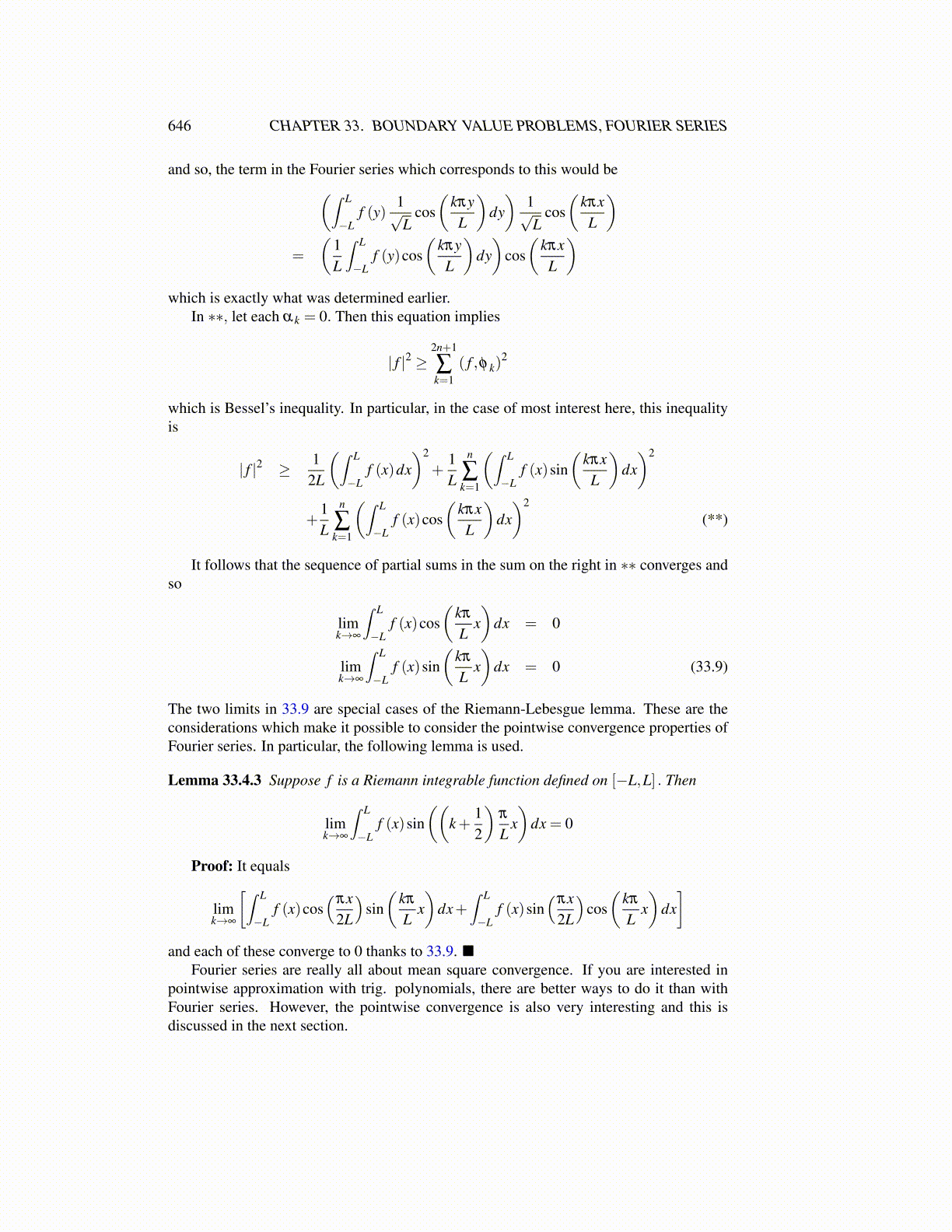
646 CHAPTER 33. BOUNDARY VALUE PROBLEMS, FOURIER SERIES
and so, the term in the Fourier series which corresponds to this would be(∫ L
−Lf (y)
1√L
cos(
kπyL
)dy)
1√L
cos(
kπxL
)=
(1L
∫ L
−Lf (y)cos
(kπyL
)dy)
cos(
kπxL
)which is exactly what was determined earlier.
In ∗∗, let each αk = 0. Then this equation implies
| f |2 ≥2n+1
∑k=1
( f ,φ k)2
which is Bessel’s inequality. In particular, in the case of most interest here, this inequalityis
| f |2 ≥ 12L
(∫ L
−Lf (x)dx
)2
+1L
n
∑k=1
(∫ L
−Lf (x)sin
(kπxL
)dx)2
+1L
n
∑k=1
(∫ L
−Lf (x)cos
(kπxL
)dx)2
(**)
It follows that the sequence of partial sums in the sum on the right in ∗∗ converges andso
limk→∞
∫ L
−Lf (x)cos
(kπ
Lx)
dx = 0
limk→∞
∫ L
−Lf (x)sin
(kπ
Lx)
dx = 0 (33.9)
The two limits in 33.9 are special cases of the Riemann-Lebesgue lemma. These are theconsiderations which make it possible to consider the pointwise convergence properties ofFourier series. In particular, the following lemma is used.
Lemma 33.4.3 Suppose f is a Riemann integrable function defined on [−L,L] . Then
limk→∞
∫ L
−Lf (x)sin
((k+
12
)π
Lx)
dx = 0
Proof: It equals
limk→∞
[∫ L
−Lf (x)cos
(πx2L
)sin(
kπ
Lx)
dx+∫ L
−Lf (x)sin
(πx2L
)cos(
kπ
Lx)
dx]
and each of these converge to 0 thanks to 33.9. ■Fourier series are really all about mean square convergence. If you are interested in
pointwise approximation with trig. polynomials, there are better ways to do it than withFourier series. However, the pointwise convergence is also very interesting and this isdiscussed in the next section.